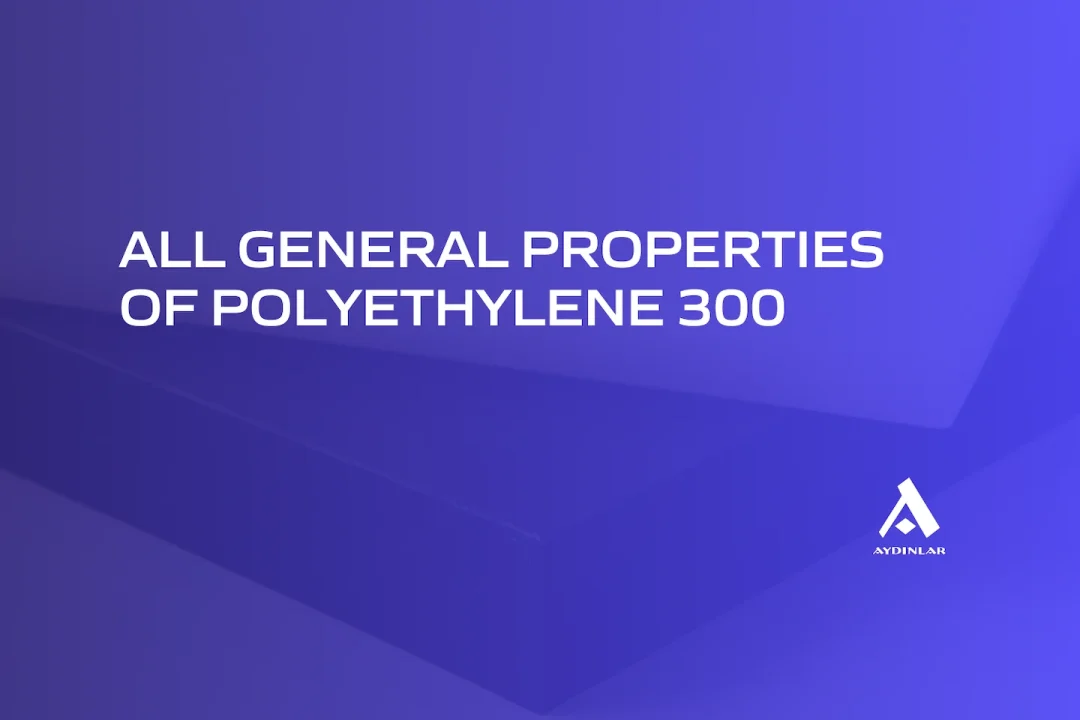Technical Plastics
All General Properties of Polyethylene 300
Among its iterations, we conceptualize “Polyethylene 300” (PE300) as a theoretical or next-generation material in this family. This article explores the potential of PE300, hypothesizing its development, properties, and applications, projecting it as a superior version of existing polyethylenes like PE100 or PE80.
Development and Theoretical Background of Polyethylene 300
The journey to Polyethylene 300 is rooted in the continuous evolution of polyethylene materials. Building upon the successes and limitations of predecessors like PE100, PE300 is theorized to incorporate advanced polymerization techniques and molecular engineering. This development is driven by the need for materials with higher performance metrics in extreme conditions, aiming for superior durability, strength, and environmental resistance.
Chemical Composition and Theoretical Properties
Polyethylene 300 is envisioned to have a more complex and densely packed molecular structure compared to its predecessors. This structure could potentially enhance its density and strength significantly. By tweaking the polymerization process and possibly incorporating nanotechnology or other advanced materials, PE300 could achieve unparalleled chemical resistance, making it suitable for more aggressive environments than its predecessors.
Potential Manufacturing Processes
Manufacturing Polyethylene 300 would likely require innovative techniques that go beyond current polymerization processes. One potential method could involve a high-precision, controlled environment, ensuring uniform molecular alignment and density. Such advanced manufacturing could pose challenges, such as higher production costs and the need for specialized equipment, but the outcome would be a material with consistently superior qualities.
Physical and Mechanical Characteristics
Hypothetically, Polyethylene 300 would boast a set of enhanced physical and mechanical properties. Its density could be significantly higher than that of PE100, and it might exhibit greater tensile strength and impact resistance. The material’s flexibility could be tailored to specific applications, ranging from rigid for structural components to flexible for tubing and fibers.
Potential Applications and Uses
The applications of Polyethylene 300 could be extensive and varied, transcending the traditional boundaries of polyethylene use. In the utility sector, PE300 could revolutionize pipeline systems for water and gas, offering greater reliability and lifespan. In the field of aerospace and automotive manufacturing, its enhanced strength-to-weight ratio could lead to lighter, more fuel-efficient designs. Additionally, its superior chemical resistance could make it ideal for medical devices and harsh chemical processing environments.
Comparative Advantages and Innovations
Compared to PE100 and other materials, Polyethylene 300 would offer several theoretical advantages. Its enhanced durability and resistance to environmental stressors would make it more cost-effective in the long run, despite potentially higher initial costs. Innovations in PE300 could include self-healing properties, smart responsiveness to environmental changes, and improved recyclability, addressing some of the major limitations of current polyethylenes.
Challenges, Limitations, and Ethical Considerations
Developing Polyethylene 300 is not without challenges. The complexity of its manufacturing process could lead to higher costs and resource use. Ethical considerations, particularly regarding environmental impact, would be crucial. The recyclability and biodegradability of PE300 would need to be addressed, ensuring that advancements in material science do not come at the cost of sustainability.
Future Perspectives and Research Directions
The future of Polyethylene 300 hinges on groundbreaking research in polymer science and engineering. Collaborative efforts between academia and industry could accelerate its development, focusing on sustainable production methods and innovative applications. The timeline for introducing Polyethylene 300 would depend on overcoming technical and economic barriers, but the potential impact on technology and industry could be profound.
Conclusion
Polyethylene 300, as a conceptual advanced material, represents the forward march of material science. Its development and introduction could herald a new era in polymer applications, offering solutions to current limitations and opening new possibilities. The exploration of such materials underscores the importance of innovation and sustainability in the future of industry and technology.



Take a look at our product range!